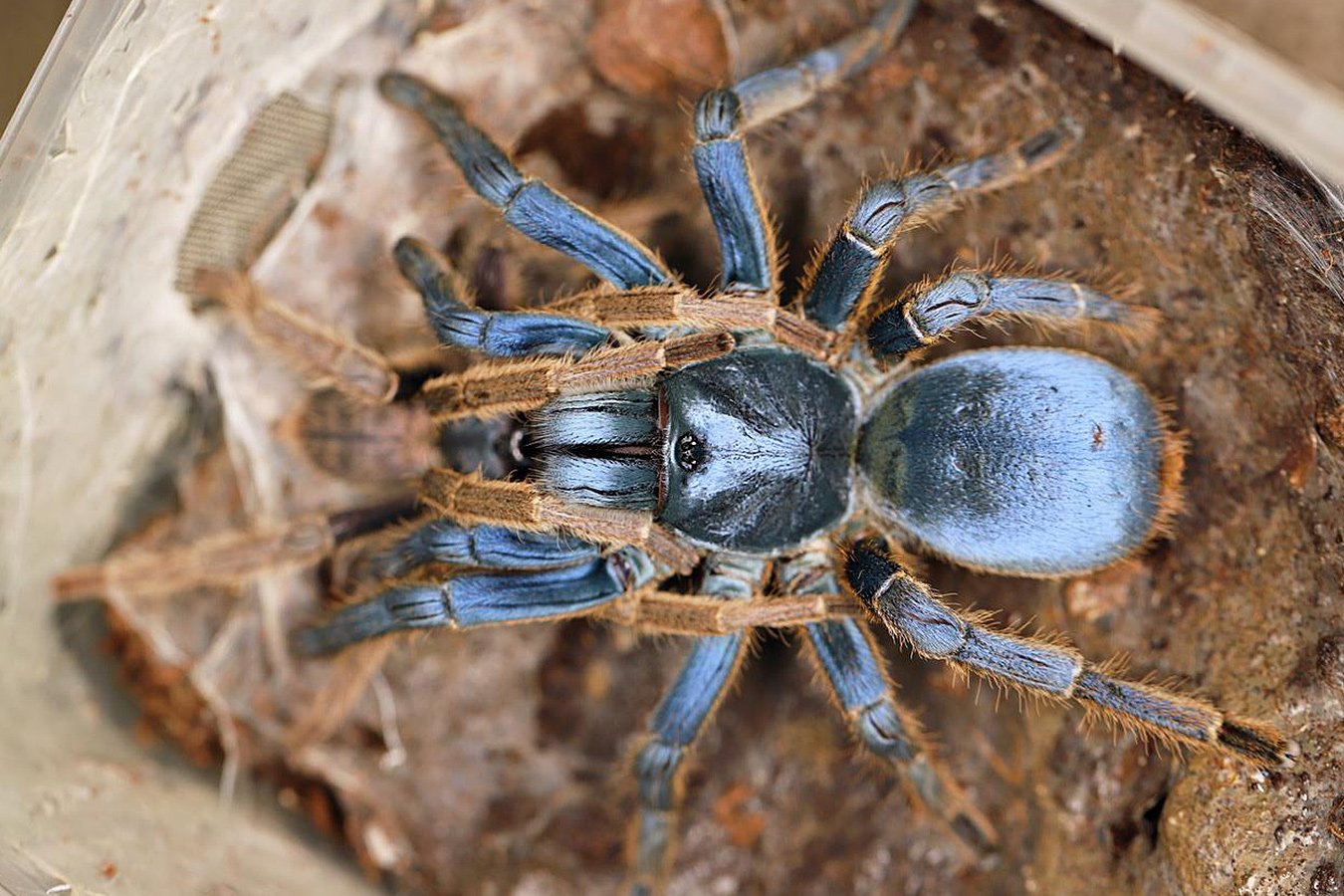
Known for their captivating appearance and fascinating behaviors, the Silver Tarantula is a species of spider that has attracted the attention of many animal enthusiasts. These arachnids possess unique characteristics that set them apart from other tarantulas, making them a subject of intrigue and curiosity.
In this article, we will delve into the world of the Silver Tarantula and explore eight intriguing facts about these captivating spiders. From their mesmerizing metallic coloring to their surprisingly gentle nature, there is much to discover and appreciate about these arachnids.
So, prepare to be amazed as we unravel the mysterious allure of the Silver Tarantula, shedding light on their fascinating features and shedding any misconceptions you may have about these eight-legged wonders.
Key Takeaways:
- Silver Tarantulas may not be silver, but they have a cool metallic sheen. They are skilled hunters and prefer to live alone in their burrows, making them fascinating creatures to learn about.
- Despite their venom, Silver Tarantulas are not very dangerous to humans. They are also master builders, creating intricate burrows and webs as their homes and hunting grounds.
Silver Tarantulas are not actually silver.
Despite their name, Silver Tarantulas are not silver in color. They are usually dark brown or black with unique markings on their bodies. The term “silver” refers to the metallic sheen that their hairs give off under certain light conditions.
Silver Tarantulas are native to Central and South America.
These fascinating creatures can be found in various countries in Central and South America, including Venezuela, Brazil, and Costa Rica. They inhabit diverse habitats such as rainforests, grasslands, and deciduous forests.
Size does matter.
The Silver Tarantula is considered to be one of the largest tarantula species in the world. Females can reach a leg span of up to 8 inches, while males tend to be smaller, with a leg span averaging around 5 inches.
They are skilled hunters.
Silver Tarantulas have excellent hunting skills and primarily feed on insects, small rodents, and other spiders. They use their strong jaws and venomous bite to subdue their prey before devouring it.
Silver Tarantulas are solitary creatures.
Unlike some other spider species, Silver Tarantulas prefer a solitary lifestyle. They typically live alone in burrows or crevices, only coming out to hunt or mate.
They possess venom but are not considered highly dangerous to humans.
While Silver Tarantulas do possess venom, they are not considered to be highly dangerous to humans. Their bite may cause mild irritation and discomfort, similar to a bee sting. However, individuals with allergies or sensitivities should seek medical attention if bitten.
Males have a shorter lifespan than females.
Male Silver Tarantulas typically have a shorter lifespan compared to females. They live for about 5-7 years, while females can live up to 20 years or more in captivity.
They are master builders.
Silver Tarantulas are skilled architects, constructing intricate burrows or webs depending on their habitat and species. These structures serve as both their homes and hunting grounds.
Conclusion
The Silver Tarantula is a fascinating creature that captivates with its unique attributes and behaviors. From its striking appearance to its intricate web-spinning capabilities, this tarantula proves to be an intriguing subject for both animal enthusiasts and researchers alike. With its metallic-colored exoskeleton and agile movements, the Silver Tarantula stands out among its arachnid counterparts. Not only does it possess impressive hunting skills, but it also exhibits interesting mating rituals and a highly adapted sensory system. Learning about the Silver Tarantula sheds light on the incredible diversity and complexity of the animal kingdom. As we continue to explore and understand these enigmatic creatures, we gain a deeper appreciation for the marvels of nature.
FAQs
Q: Are Silver Tarantulas poisonous?
A: Yes, Silver Tarantulas are venomous. However, their venom is not considered dangerous to humans, causing only mild irritation or discomfort.
Q: What do Silver Tarantulas eat?
A: Silver Tarantulas primarily feed on insects, such as crickets, beetles, and grasshoppers. They are skilled hunters that use their powerful jaws and venom to immobilize their prey.
Q: How long do Silver Tarantulas live?
A: Silver Tarantulas have a relatively long lifespan for arachnids, with females living up to 20 years and males averaging around 5 years.
Q: Are Silver Tarantulas aggressive?
A: Silver Tarantulas are generally docile and shy creatures. They prefer to retreat rather than engage in aggressive behavior. However, they may bite if they feel threatened or provoked.
Q: Where are Silver Tarantulas found?
A: Silver Tarantulas are native to the rainforests of South America, particularly in countries like Brazil, Peru, and Ecuador.
Q: Do Silver Tarantulas migrate?
A: While Silver Tarantulas are not known for long-distance migration, they may occasionally move from one habitat to another in search of better food sources or suitable mates.
Q: Can Silver Tarantulas regenerate lost limbs?
A: No, unlike some other arachnids, Silver Tarantulas cannot regenerate lost limbs. However, they can still lead a fully functional life even with missing appendages.
Q: Are Silver Tarantulas social animals?
A: No, Silver Tarantulas are solitary creatures. They prefer to live and hunt alone, only coming together during the mating season.
Was this page helpful?
Our commitment to delivering trustworthy and engaging content is at the heart of what we do. Each fact on our site is contributed by real users like you, bringing a wealth of diverse insights and information. To ensure the highest standards of accuracy and reliability, our dedicated editors meticulously review each submission. This process guarantees that the facts we share are not only fascinating but also credible. Trust in our commitment to quality and authenticity as you explore and learn with us.
